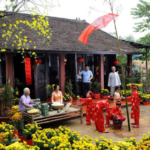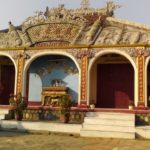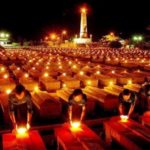Ancient town with a history of over 500 years
According to the historical book “Dai Nam Nhat Thong Chi”, Son Tay was formed more than 500 years ago. In 1469, under the reign of King Le Thanh Tong, the Son Tay precinct was established in La Pham, Tien Phong, Quang Oai (now Tan Hong, Ba Vi, Hanoi), and it was called Son Tay Thua Tuyen at that time.
During the time of Le Canh Hung (1740-1786), the precinct was moved to Mong Phu, Phu Loc, Quang Oai (now Duong Lam, Son Tay). In the third year of Minh Mang (1822), the precinct was moved to Thuan Nghe, Minh Nghia (now the center of Son Tay). In 1831, the Son Tay precinct was upgraded to Son Tay province and the precinct headquarters was changed to the provincial capital.
In 1942, the French colonialists transformed the provincial capital of Son Tay into a town. This town was the administrative center of Son Tay province, which included 6 districts: Quoc Oai, Quang Oai, Tung Thien, Phuc Tho, Thach That, and Bat Bat. It covered an area of 150 hectares in the northern region and had a population of 6,116 people.
In June 1965, according to the decision of the Government, Son Tay town and the districts of Son Tay province were merged with Ha Dong province to form the new Ha Tay province. In 1979, according to the decision of the Council of Ministers, Son Tay town and some districts of Ha Son Binh province were transferred to Hanoi. In October 1991, Son Tay town was separated again and returned to the administration of Ha Tay province.
On April 13, 2006, the Minister of Construction issued Decision No. 655/QD-BXD recognizing Son Tay town as a type III urban area. Notably, on August 2, 2007, the Government issued Decree No. 130/NĐ-CP to establish Son Tay city in Ha Tay province.
On August 1, 2008, according to Resolution No. 15/2008/QH12 of the National Assembly of Vietnam, Son Tay city was merged back into Hanoi. Later, on May 8, 2009, the Government decided to change Son Tay city to Son Tay town under the administration of Hanoi.
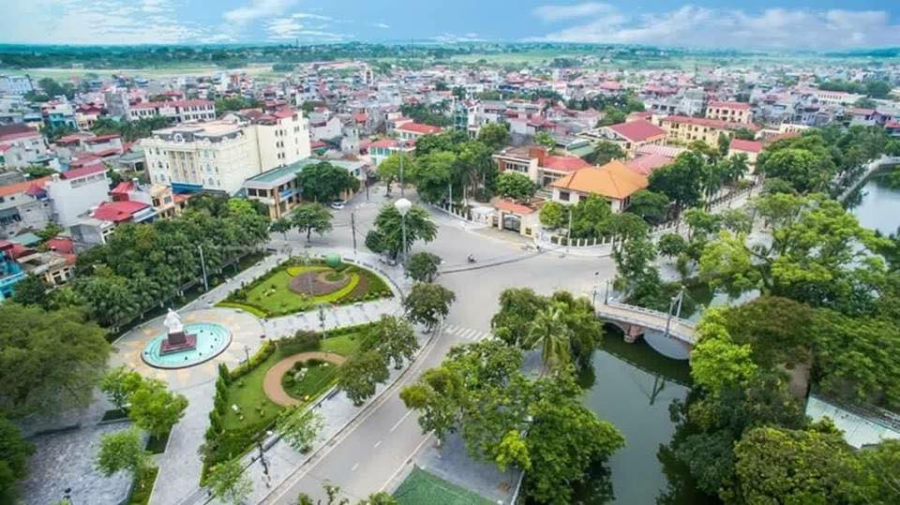
The official website of Son Tay town states that it is the westernmost point of the capital, located about 42km northwest of the center of Hanoi. Son Tay town is connected to the center of Hanoi and other areas of the Red River Delta, as well as the vast Northwestern region of the country, through a diverse transportation system including road and waterway routes, such as the combination of the Red River and Tich River, National Highway 32, National Highway 21A, and provincial roads 414 and 413.
This area has a total area of about 113.46 square kilometers and an estimated population of 240,000 people, organized into 15 lower-level administrative units including 9 wards and 6 communes. This locality is also home to 53 institutions and organizations, including businesses, hospitals, schools, along with 30 military units.
In terms of geography, the town borders Phuc Tho district to the east, Ba Vi district to the west, Thach That district to the south, and Vinh Tuong district of Vinh Phuc province to the north, with the Red River forming a natural boundary.

Must-visit places in Son Tay
As time flows, Son Tay town used to be an important fortress protecting the western part of Thang Long – the ancient capital and the cultural stronghold of the Doai land. This has helped the town accumulate a rich, diverse, and unique cultural and historical heritage.
Here, nurtured by the deep-rooted cultural traditions through centuries, Son Tay owns 193 historical relics, religious architectural monuments, ancestral worship sites, and historical sites commemorating important events of revolutions and resistance. It also has over 300 ancient houses in various styles. Among them, there are 68 classified and preserved relics (including 15 national-level relics and 53 provincial-level relics).
Places closely associated with the fame and essence of Son Tay such as Dong Mo Lake, Son Tay ancient citadel, Duong Lam ancient village with its ancient houses made of laterite, Mia Pagoda, and many other relics have become typical symbols of this region.
Duong Lam Ancient Village
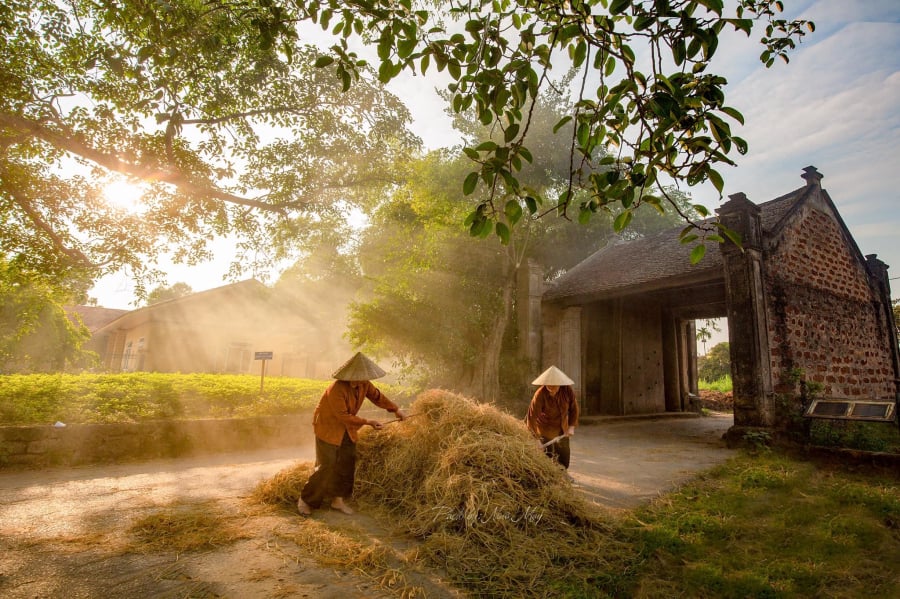
Duong Lam Ancient Village, a national architectural-arts heritage, is a complex of 50 valuable relics and about 100 ancient houses with a history of over a century, along with nearly 1,000 houses featuring the architectural characteristics of the Northern countryside.
Compared to Hoi An and the Old Quarter in Hanoi – urban heritage sites, Duong Lam stands out with its intact beauty and the character of an ancient Vietnamese village centuries ago, situated in the heart of the Red River Delta.
When stepping into Duong Lam ancient village, visitors have the opportunity to immerse themselves in the distinctive cultural space of the Northern countryside with familiar images such as banyan trees, wells, and communal yards. The local people here continue to maintain traditional customs and crafts such as making soy sauce, producing lam tea, and making traditional cakes, enriching the experience of visitors. Duong Lam, with these cultural values, has become an attractive destination for community-based and craft village tourism adjacent to Hanoi.
Moreover, Duong Lam is also a place to honor great historical figures, known as a place where “one hamlet gives birth to two kings” – Phung Hung and Ngo Quyen. Here, there is Van Mieu Tran Son Tay, a symbol of the tradition of respect for learning and teachers, depicted through two stone steles inscribed with the names of 288 scholars from the Ly to Mac dynasties, reviving the tradition of ancient Tran Son Tay.
Son Tay Ancient Citadel
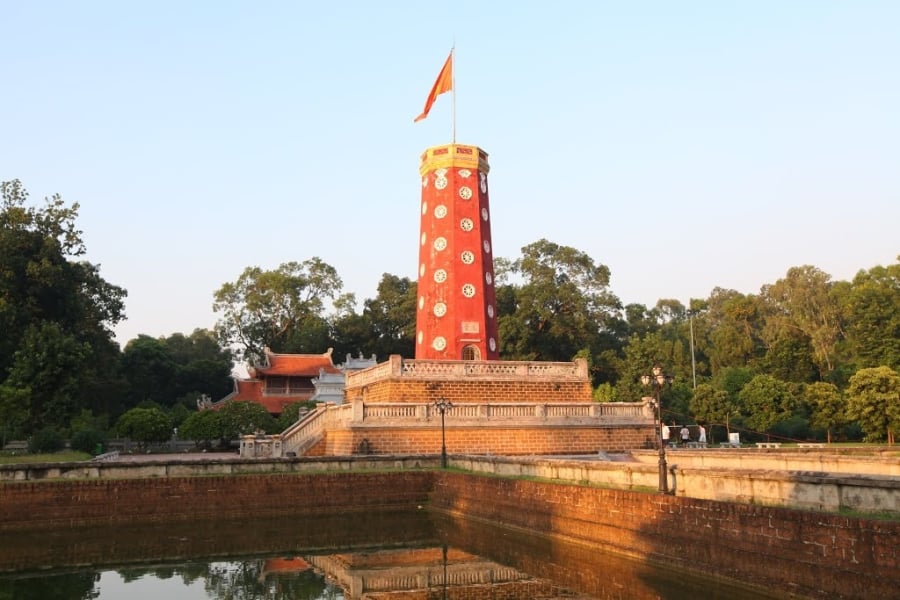
Son Tay Ancient Citadel, known as one of the important pillars of the Thang Long – Hanoi capital, not only served as a protective shield but also served as a strategic starting point for expanding and controlling the border regions of the country. Constructed since 1822, under the reign of King Minh Mang, this citadel was entirely made of laterite, a unique building material of the Doai region, ensuring the necessary solidity for a national defense work.
In addition, this area also possesses the Ve Temple (also known as the Dong Cung) – a part of the famous quadrangle system in Doai land, along with the Mang Son Temple (Southern Palace), and a series of other relics with special historical and cultural values.
Explore 12 Amazing Destinations for Biking Trips
Unlock Vietnam in a brand new way with an exciting biking tour! Discover the stunning beauty of the country with Dien May XANH’s top 12 must-see destinations. From sweeping plains to clear blue beaches and mountainous vistas – experience all the sights with your own personal cycling tour. Find your ideal route and set out for an adventure today!

























